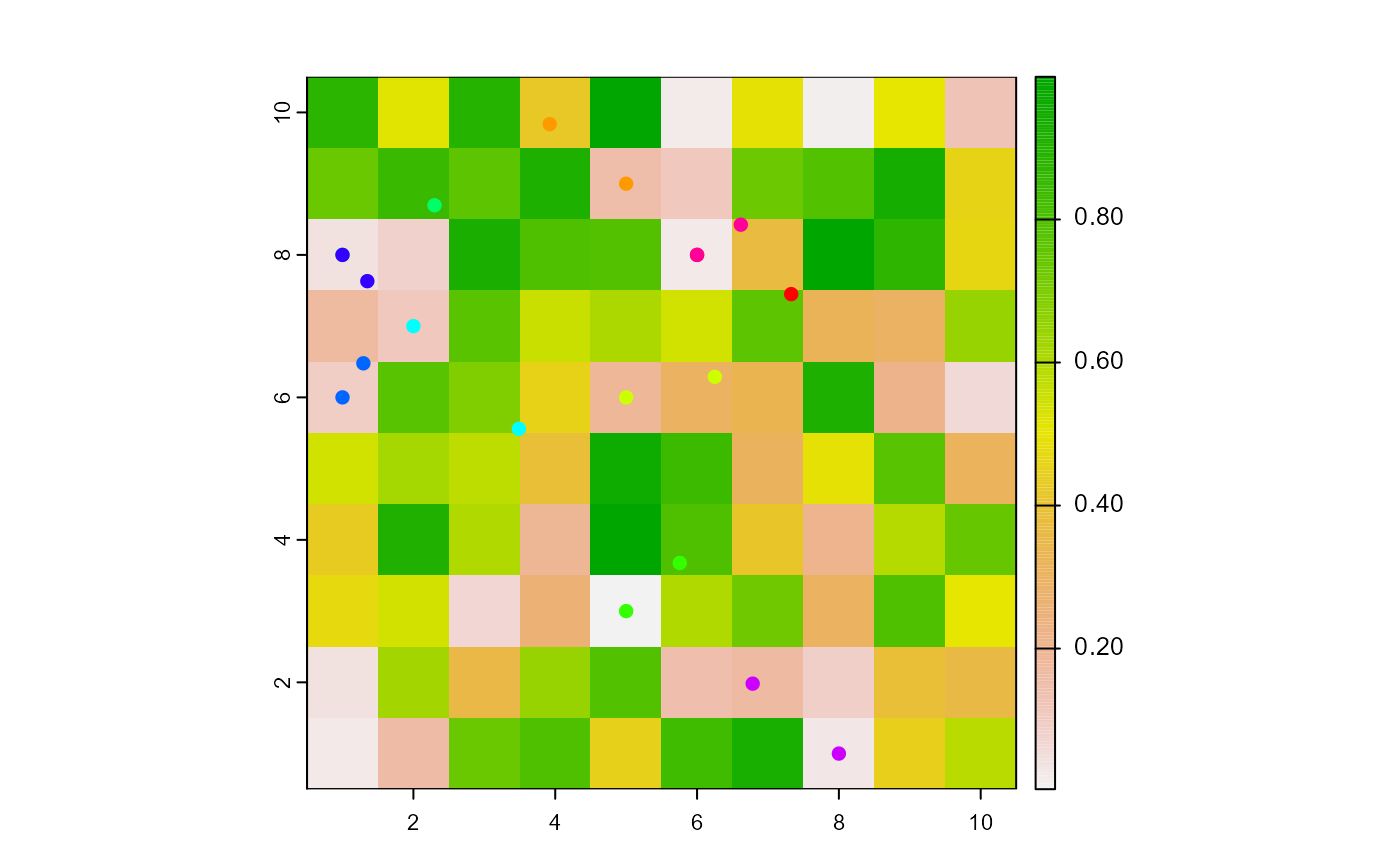Move the turtles to their neighboring patch with the lowest value.
downhill(world, pVar, turtles, nNeighbors, torus = FALSE)
# S4 method for worldMatrix,missing,agentMatrix,numeric
downhill(world, turtles, nNeighbors, torus)
# S4 method for worldArray,character,agentMatrix,numeric
downhill(world, pVar, turtles, nNeighbors, torus = FALSE)Arguments
- world
WorldMatrixorworldArrayobject.- pVar
Character. If the
worldis aworldArrayobject,pVaris the name of the layer to use to define thepatchesvalues.pVarmust not be provided if theworldis aworldMatrixobject.- turtles
AgentMatrixobject representing the movingagents.- nNeighbors
Integer: 4 or 8. Represents the number of neighbor
patchesconsidered.- torus
Logical to determine if the
worldis wrapped. Default istorus = FALSE.
Value
AgentMatrix representing the turtles with updated
coordinates and updated data for their heading values and
previous coordinates prevX
and prevY.
Details
If no neighboring patch has a smaller value than the patch where the
turtle is currently located on, the turtle stays on this patch. It still
moves to the patch center if it was not already on it.
If there are multiple neighboring `patches` with the same lowest value,
the `turtle` chooses one `patch` randomly.
If a `turtle` is located on a `patch` on the edge
of the `world` and `torus = FALSE`, it has fewer
neighboring `patches` as options to move than `nNeighbors`; if
`torus = TRUE`, the `turtle` can move on the other side of the `world` to
move downhill and its choice of neighboring `patches` is always equals to
`nNeighbors`.References
Wilensky, U. 1999. NetLogo. http://ccl.northwestern.edu/netlogo/. Center for Connected Learning and Computer-Based Modeling, Northwestern University. Evanston, IL.
Examples
w1 <- createWorld(
minPxcor = 1, maxPxcor = 10, minPycor = 1, maxPycor = 10,
data = runif(100)
)
t1 <- createTurtles(n = 10, coords = randomXYcor(w1, n = 10))
plot(w1)
points(t1, col = of(agents = t1, var = "color"), pch = 16)
if (requireNamespace("SpaDES.tools", quietly = TRUE)) {
t1 <- downhill(world = w1, turtles = t1, nNeighbors = 8)
points(t1, col = of(agents = t1, var = "color"), pch = 16)
}
